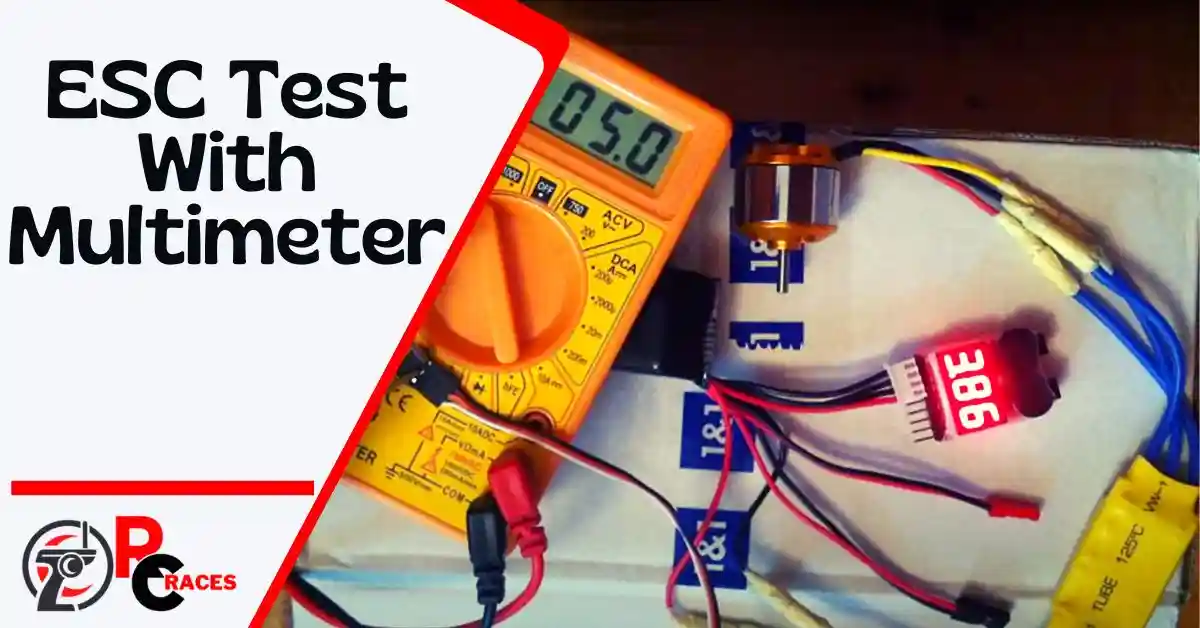Got a new ESC and wondering if it’s working? Or, have you found an ESC at the back of your garage and wanna play with it? If you have no idea how it works, you are at the right place.
You can easily test the ESC with a multimeter. It’s okay if you have never done it before. Let us guide you through this post.
Now, you may be confused about how to test ESC with a multimeter.
You can test the ESC by checking around the positive/ negative pad with a multimeter. Checking pads is simpler and can save you more time. You can thoroughly check each MOSFET to find out which specific switch isn’t working. If pad checking isn’t enough, you can go through the switches for details.
Scroll through till the end to learn in-depth how you can test your ESC with a multimeter.
ESC Module
ESC or electronic spark control is an automatic module system for the ignition of a car. It enables the car to stabilize when steering, making sudden turns, maneuvers, and breaks. It can also identify any control of loss and prevent it from veering off.
The ESC works with the ignition to reduce the speed of the engine and control the wheels. It is important to make sure the ESC is functioning perfectly on your RC car. We will show you how you can test faulty ESC in the next section.
Guide On How To Test Faulty ESC With Multimeter
One can have a broken ESC or might just require checking manually to check for function. One of the easiest ways to do that is to use a multimeter. Don’t have it near you?
You can get a multimeter locally in Walmart or CVS as well as on Amazon. Both digital and analog multimeters are widely available.
Once you have it, let’s get started:
Checking Around Positive/ Negative Pads
An ESC has a positive and negative pad at its bottom. The other three sides have small metal dips that allow current to pass through to the motors. The dips are called motor solder pads.
This method is fairly simple and quick to run tests to see if the ESC is okay. All you need is a multimeter and your ESC and you’re good to go.
Step 1
Put the multimeter in continuity mode. The button may have a ‘speaker blasting’ icon on top. Here, we will test the resistance and find out if there is a short- circuit.
Step 2
Take the black and red leads, touch their ends and it should make a long beep noise. It will mean you have turned on the continuity mode.
Step 3
Place the leads consecutively or crossly in the small dips around the edge of the ESC. Check if there is any reading or alarm. If there is a short beep, it’s okay. But if there is a long beep, then you have a problem.
Alternative Method
There is an alternative method to it. First, you have to place one of the leads on the positive or negative pad. Then go around the edges and touch the other lead on the motor outputs. The loud beep will be your answer.
Any long alarm will indicate there is a short circuit in one of those.
Checking Around MOSFETS
MOSFETS are transistors that are placed in multiple numbers in the ESC. The terminal voltage can vary due to different reasons. This terminal is called The Gate. It changes the resistance between the other two terminals; the Source and the Drain.
The MOSFET has a metal oxide semiconductor structure. Thus, by using the field-effect of gate voltage, a semiconductor switch is created.
The gate allows AC current to pass from the source to the drain. But in case the gate is damaged, the current will continuously keep flowing to the drain. This can cause it to malfunction. It will also imply the FET is broken.
The multimeter will make a beep to confirm any continuity between the source and the drain.
If you make the two leads touch after activating continuity mode, the meter will beep. It will mean that electricity will flow from one point to another wherever the two leads touch.
Follow this guide step by step to test your ESC around the MOSFETS simply.
Step 1
Take a close look at a MOSFET, you’ll see four legs on each of two opposite sides. Here, you will get three of one, four of the other, and one gate.
One side will have four drains and the other side will have one gate and three sources.
Step 2
Firstly identify the gate, drain and switch. Then touch the black lead on the negative source and red lead on the positive source. If the multimeter makes a beeping noise, then the FET is bad. So naturally, the ESC will be faulty too.
Remember, if you accidentally touch the two drains or two sources together, it will beep. False alarms are never fun. So it’s really important to identify the source, drain and gate beforehand.
What Problems You Can Face With A Broken ESC
If your ESC is not working properly then the motors won’t work together either. The motors are going to twitch, make noise, and would face throttle speed problems.
Moreover, a short circuit in the MOSFET can cause a spark or small explosion. It can basically lead it to fry the whole drone. You can keep these accidents at bay by keeping your ESC in check.
You can also try some good quality ESC for your RC car motor.
Tips
Few tips that can always come in handy:
- Make sure your ESC is out of the quadcopter. Because some of the caps can get charged and some logic gates may open. It may seem like you have a bad MOSFET.
- Look out for the correct identification of the source, drain, and gate to get accurate results.
- Carefully place the leads in the dips so that it’s actually touching the metal this way you will get correct results.
- Always use a current limiter to prevent ESCs and motors from burning.
- It’s always recommended that you test your brushless motor every once in a while.
FAQs
How does an ESC actually work?
An ESC is a circuit that controls the speed of an electric motor. It follows a reference signal from the throttle lever or joystick. A signal from the flight controller commands ESC to increase or decrease voltage. Thus the drone changes the speed of the propeller and thus can fly higher or lower.
Why do ESCs burn out?
Several factors can cause the ESC to burn. Cases of very high current, voltage, and low cooling can cause the ESC to burn out. A burnt ESC can burn the whole motor at the same time. Moreover, wrong polarity and the reversed battery can pop any electronics.
End word
We have formulated two methods on how to test ESC with a multimeter. This is as simple as it goes. Which one of them are you going to try out?
Let us know in the comments! Until then, see you next time!
Have a good day!


